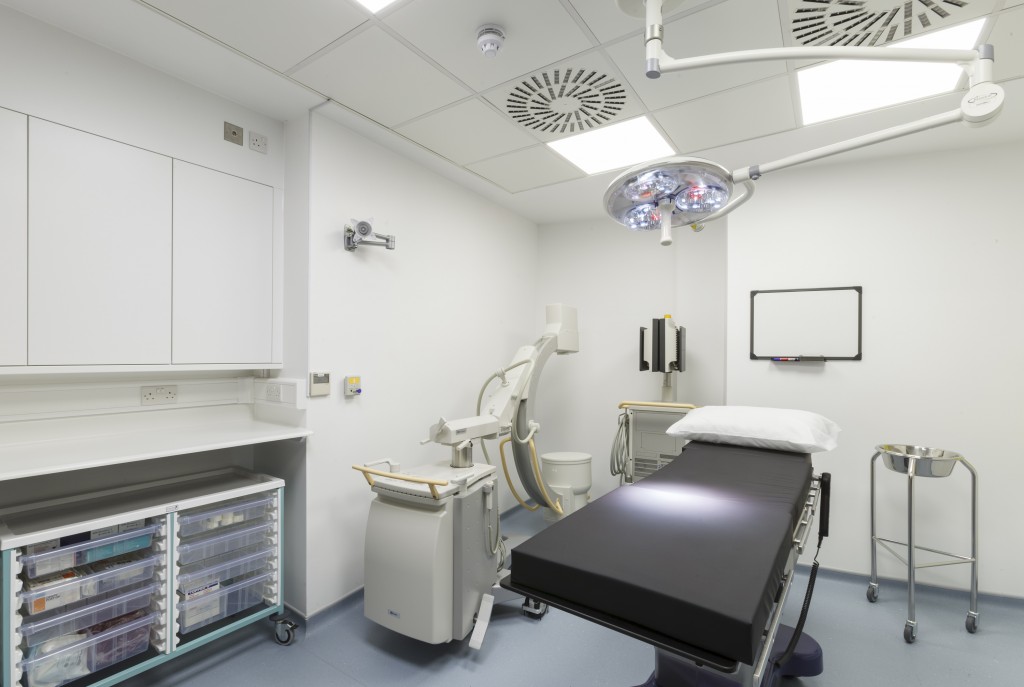Workplace designer Cannon Davis has been able to create a state-of-the-art radiotherapy suite without using lead-lined boards by installing Safeboard, the X-ray shielding plasterboard from Knauf. The suite, together with six consulting rooms and two operating theatres, forms The Whiteley Clinic, Harley Street, which specialises in the treatment of varicose veins.

There were strong reasons to seek an alternative to lead for X-ray protection, says Jeremy Hopkins of Cannon Davis Commercial Interiors, which masterminded the conversion of what was previously Grade A office space. “We needed a material that was light so there would be no additional weight that would require any structural alterations. If we had chosen lead-lined components we would have had to use specialist contractors and fixings,” he noted. “There would also have been wet trades involved in laying concrete blocks which would have been disruptive, inflexible and time consuming.”
Knauf Safeboard brings X-ray protection and fire and acoustic performance together in one easy-to-install board thanks to its key ingredient – barium sulphate. This is a radio contrasting agent that can create a barrier for radiowaves of specific bandwidths. In a barium meal, the X-rays hit the barium and the image silhouettes the specific area of interest. In Safeboard the distinctive yellow core is filled with enough of this material to effectively block X-rays across its entire area – and each board is thoroughly X-rayed on the production line to ensure radiation-tightness.
Safeboard was used to construct the walls, ceiling and floor of the X-ray room to form a compartment that effectively prevented any leakage of radiation. To form the flooring the existing galvanised raised floor was stripped out and replaced with Safeboard sandwiched between two layers of plywood and then surfaced with a non-slip vinyl floorcovering. The new facility is now equipped with a C-arm X-ray imaging machine and has been fully tested by a Radiation Protection Adviser (RPA).
No specialist skills are required to install Safeboard – it cuts and snaps like an ordinary plasterboard, while Knauf Safeboard Jointing Compound is used to fill joints to complete the radiation shield. “Our normal fit-out team could carry out the installation,” said Mr Hopkins. “And M&E services could be delivered through protected access routes without reducing integrity, so it was just like a normal office construction.”
Specifying Knauf Safeguard is straightforward because the radiation protection afforded by Knauf Safeguard depends upon the number of staggered layers that are installed. Any project that requires X-ray shielding will involve an RPA who will specify the lead code or thickness of lead lining that is required, which can then be cross-referenced with the output of the X-ray source in kV to determine how many layers of Safeboard are needed. Once the partitions have been constructed it is easy to ensure that the correct number of sheets of Safeboard has been used – just look at the cut edges of the sheets for the yellow core that denotes Safeboard.
Knauf X-ray partitions can be designed to suit mobile X-ray apparatus, retro-fitted or removed far more easily than traditional lead-lined partitions, making them ideal for modern, future-adaptable healthcare projects that need to be reconfigured easily.